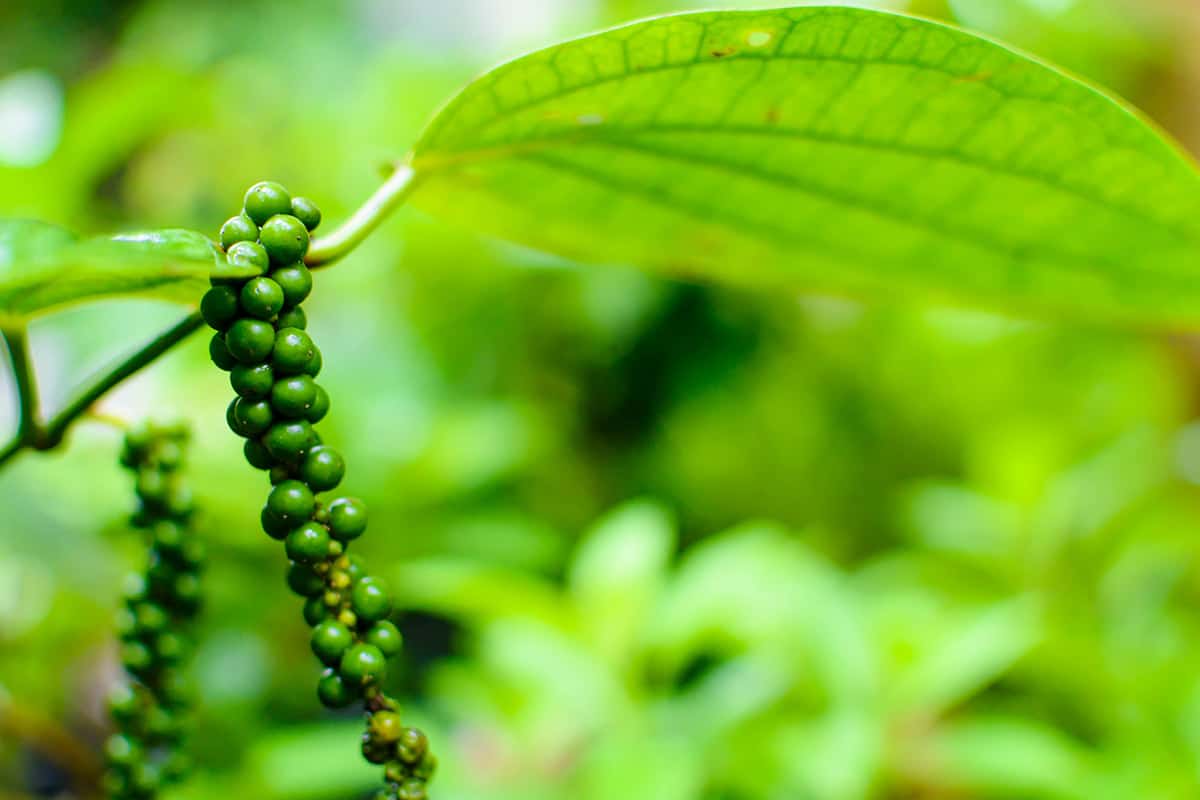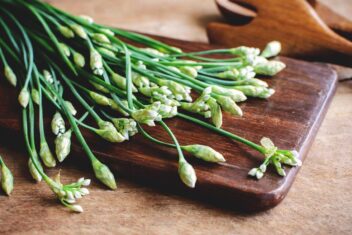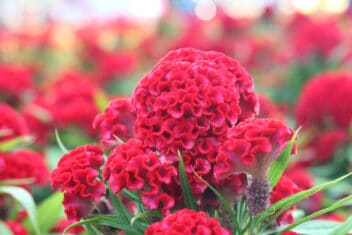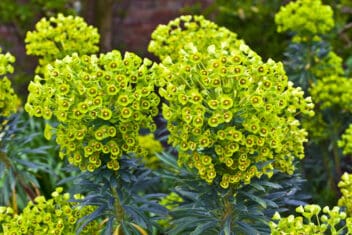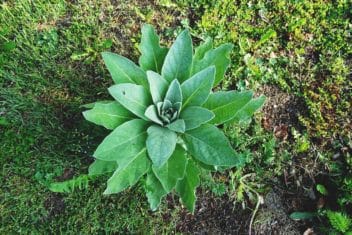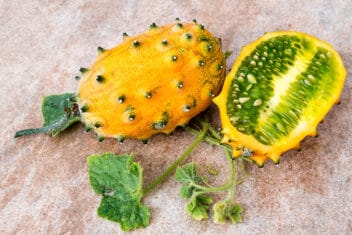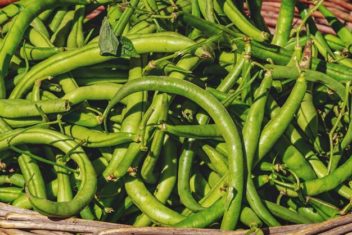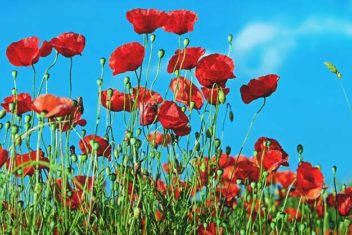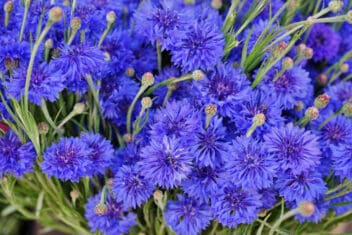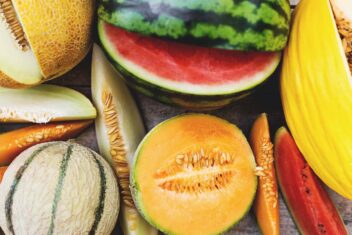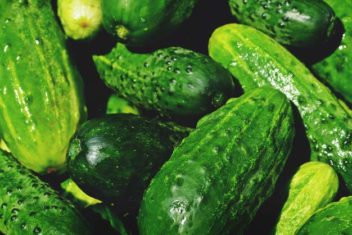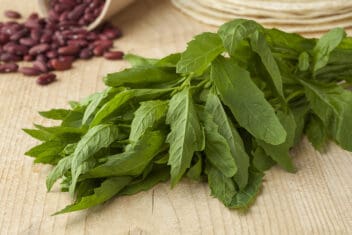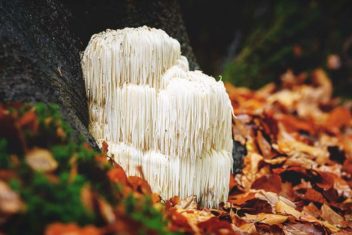You probably know that pepper is one of the most used spices in the world, but did you know that growing peppercorns at home is totally possible? In the right circumstances, you can. You need to have space, patience, and heat.
Pepper grows in hot parts of the world with high humidity and it needs those conditions to fruit. One small plant will give you an ample number of peppercorns, and it will keep producing for years to come.
Ready to get spicy?
What is Peppercorn?
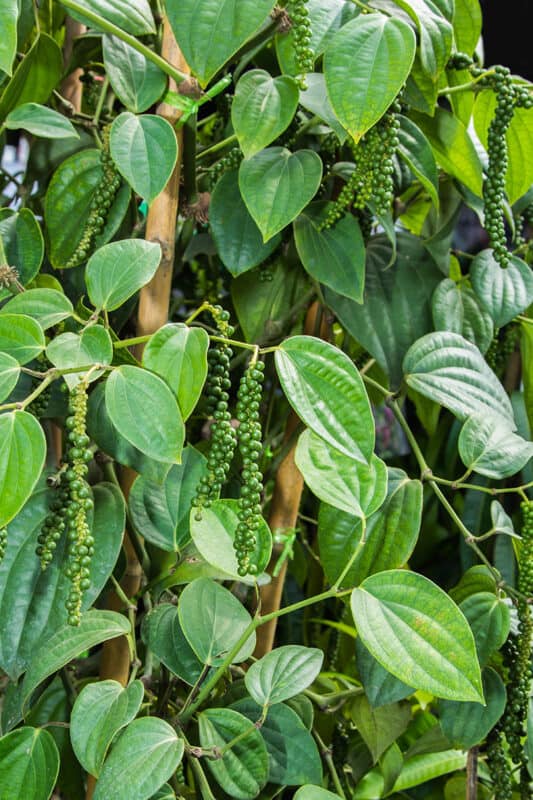
Peppercorn (Piper nigram) is native to India. It’s a perennial vine that blooms lovely little white flowers, typically in the middle of summer.
It’s a climbing vine that lasts for years once it’s established and looks good as an indoor ornamental as well as an outdoor vine to produce peppercorns.
There is another variety (Piper sarmentosum) that doesn’t produce peppercorns, but the leaves are edible. We’re going to concentrate on P. nigram. Are you ready to learn all about this delightful plant?
How to Plant Peppercorn
Peppercorns grow in tropical environments. They love it when it’s hot and humid.
The plants take about four years to grow to a size where they bloom and produce peppercorns, but it’s well worth waiting for, especially if you consider it a decorative plant until it then.
Where to Plant
Peppercorn grows in USDA Zones 10 to 12, where you can provide the hot, humid conditions it craves. I would give it a go even if you aren’t in the right zone because plants always surprise us with their ability to survive.
You can also take the containers indoors when conditions are less than ideal.
Peppercorn loves dappled light. If you think about how it grows in a jungle type environment, the forest canopy allows light in but filters it as well. The plants need between 6 to 8 hours of partial sunlight.
Peppercorn loves humus-rich soil, just like most plants under canopies. That’s because the leaves and debris of taller plants provide well-rotted nutrients once they drop down to the ground.
The soil should hold moisture but drain well so the roots aren’t in standing water. Aim for a slightly acidic soil with a pH of 6 to 7.
When to Plant
Plant outside in spring when temperatures are consistently higher than 60°F. Any lower than this and peppercorn will struggle or even die.
If you’re starting your peppercorn seeds inside, they take about 30-35 days to germinate. They need heat and the soil needs to be a consistent 75-85°F. Use a heat pad for best results.
If you start your peppercorns in seed trays, transplant them when they’re 4 inches tall.
Container Planting
Peppercorns do well in containers, which makes it easy for you to move the plant if the weather cools too much.
The best way to start peppercorns in containers is to plant them in hanging baskets while they are young. You can leave them in the baskets for two years. You can leave them there if you just want a decorative yard element.
If you plan on growing peppercorns to eat, transplant the plants into bigger containers on the ground after two years. A five-gallon pot is ideal.
Once in bigger pots, you need to use a trellis or place the containers where the peppercorn plant can climb. In the right environmental circumstances, the vine will reach up to 10 to 12 feet.

The root systems of peppercorns are quite slow-growing, so it’s not often you need to re-pot to prevent them from being rootbound.
To get the peppercorns started in containers, use good quality potting mix. Plant the seeds or plants 3 inches apart from each other. Keep the soil moist with a spray bottle.
Depending on the size container you use, thin the weakest plants out to give them more space. Each plant needs at least 12 inches in all directions.
Planting Seeds
You can’t take one of the peppercorns from your peppermill in the kitchen to plant. You will need to get seeds specifically for planting. Luckily they’re becoming more available.
Soak your seeds overnight to hydrate them. Plant in seed raising mix and keep it at 75-85°F. In cooler temperatures, the germination may take longer, or not work at all. Keep the mix moist with a spray bottle.
Once the seedlings are about four inches tall, transplant to bigger pots, hanging baskets, or your garden.
Plant your peppercorn plants about 12 to 15 inches apart when planting seedlings in the garden. They can be closer in pots, but just watch for overcrowding.
Propagation
If you or someone you know has a peppercorn plant, you can propagate a new plant from a low lying stem, called a runner.
Much like a strawberry runner, you can bury the low lying stem and over a season, it will grow roots. You can then cut the new plant off and replant it.
In a container, leave the runner attached to the plant and put it in another pot placed nearby. Give it several months to develop roots and then clip it away from the parent plant.
Caring for Peppercorn Plants
You’ve been patient, your seedlings are thriving, now what?
Fertilizer
Peppercorn plants don’t require too much feeding. Apply a balanced fertilizer every two weeks in summer. Use a 7-9-5 fertilizer or even a 10-10-10. You’ll only need a 1/4 teaspoon of fertilizer to a gallon of water. Stop fertilizing in the fall and winter.
If you have your peppercorns in pots, use a container specific fertilizer.
Water
Peppercorns don’t like to dry out, but at the same time, don’t want wet feet. If you see the soil around the plant drying out, water well as long as the moisture drains away. Peppercorns will suffer root rot if the soil is too wet.
Thinking of a jungle environment, the soil is consistently wet being in partial shade or dappled sunlight.
If you stick your finger into the soil, it should always feel like a well-wrung out sponge, not a wet one.
Mulch
Peppercorns love mulch. In their natural environment, all the leaves from the surrounding plants drop to the ground. They have deep levels of mulch, constantly breaking down and feeding the soil.
Recreate this by mulching well to add nutrients as well as to retain high levels of moisture.
Pruning
You don’t need to prune peppercorn except to remove damaged or dead branches.
Companion Planting for Peppercorn
Peppercorns suit food forest type gardening as well as against a trellis and in containers. I’ve grown the following plants around peppercorn with no problems.
- Eggplant
- Spinach
- Chard
- Chives
- Dill
- Basil
- Rosemary
- Parsley
- Oregano
They’re ideal under leafy trees in a food forest, as well.
Common Problems and Solutions for Growing Peppercorn
Peppercorn has few pests and diseases. Here are the ones to watch for.
Mealybugs
Mealybugs love humid environments and the plants that thrive there. You often find them in greenhouses. They suck the juice from plants and are often the vector for other diseases.
Use regular applications of organic neem oil. If you have an infestation, add pyrethrum as a knockdown on the first few times you spray. Use caution when using the products when pollinators are present.
Root Rot
Root rot attacks the roots of the peppercorn when the soil is too wet. Don’t plant peppercorns in soil that isn’t free draining. Allow the soil to start drying out a bit before watering again.
Root rot is caused by a fungus that thrives in wet soil. Once a plant is affected by it, removal of the plant is required.
You likely won’t now you have it until the plant aboveground starts to loo stunted and sick.
Sometimes peppercorn leaves get black spots on the undersides that look like bugs or disease. This is nothing to worry about as it’s a natural part of the plant’s growth.
Harvesting and Drying Peppercorn
You can harvest at any color as the peppercorn goes through the stages of fruiting. Each color has a slightly different taste characteristic.
For black peppercorns harvest in the early stages of ripening. For white peppercorns, harvest when the peppercorns are red and they’ll turn white after drying.
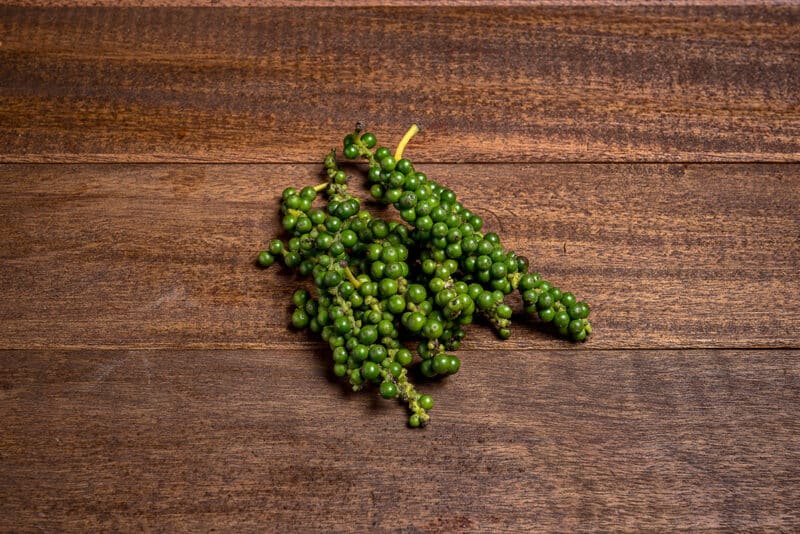
The rule of thumb is:
- If you want black or green peppercorns, harvest when they are green
- If you want red or white peppercorns, harvest when they are red.
Once you’ve picked them, lay them out in a single layer in the sun to dry. Don’t allow them to get wet. You can use a dehydrator as well.
You get a lot of peppercorns even from a small plant in pots, but be patient for the plant fruits after a couple of seasons of growing.
Remember that peppercorns love hot, humid conditions, so if you live in a cooler area, you can move them inside if they’re in containers. This is especially important if the temperatures start to approach a low of 60°F.
Growing this wonderful plant is both fun and challenging, but well worth the effort. If you have been successful in growing your own peppercorns, we’d love to hear any tips and tricks you have.
